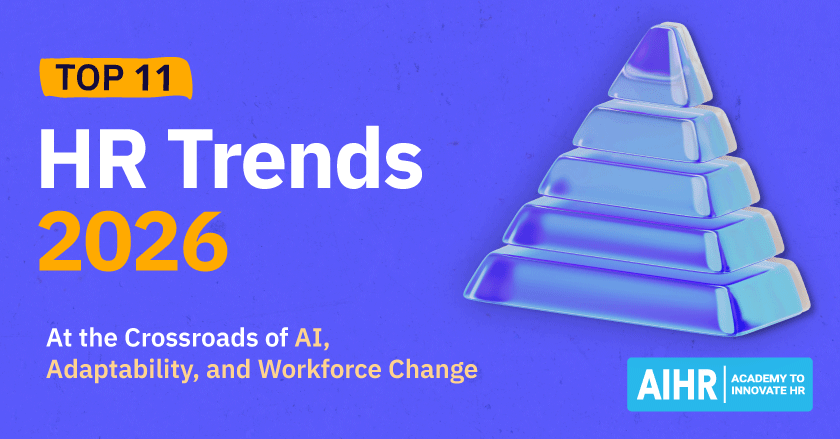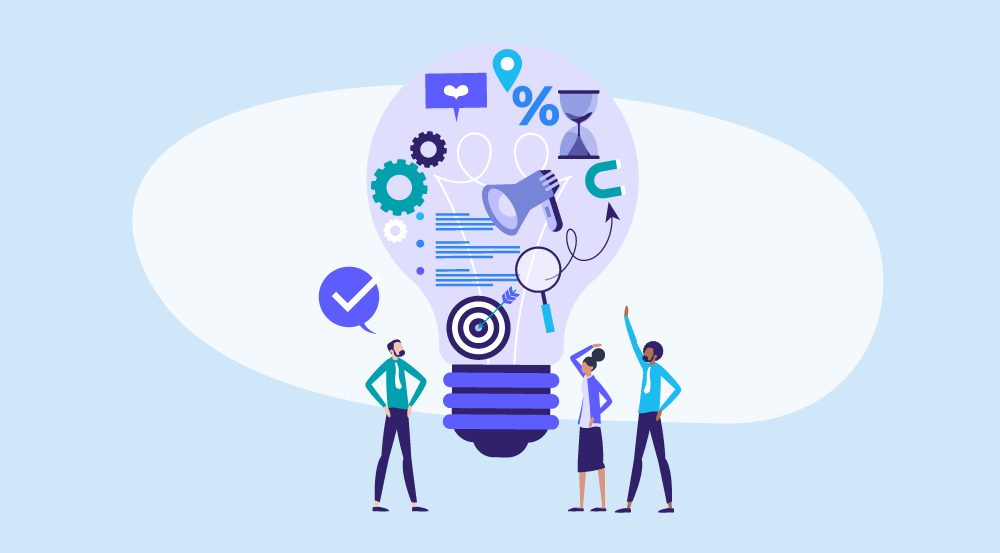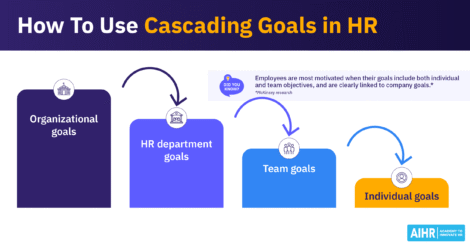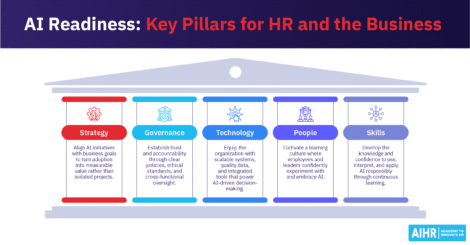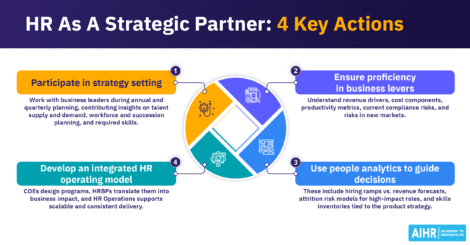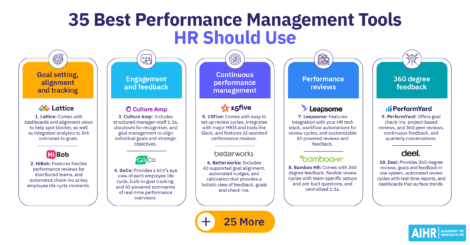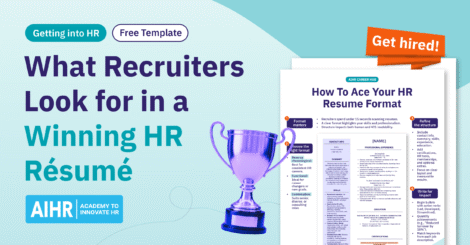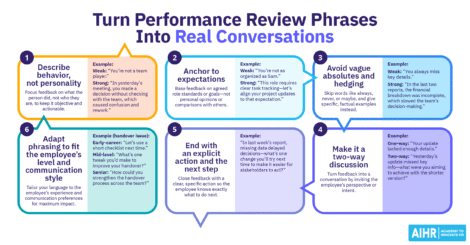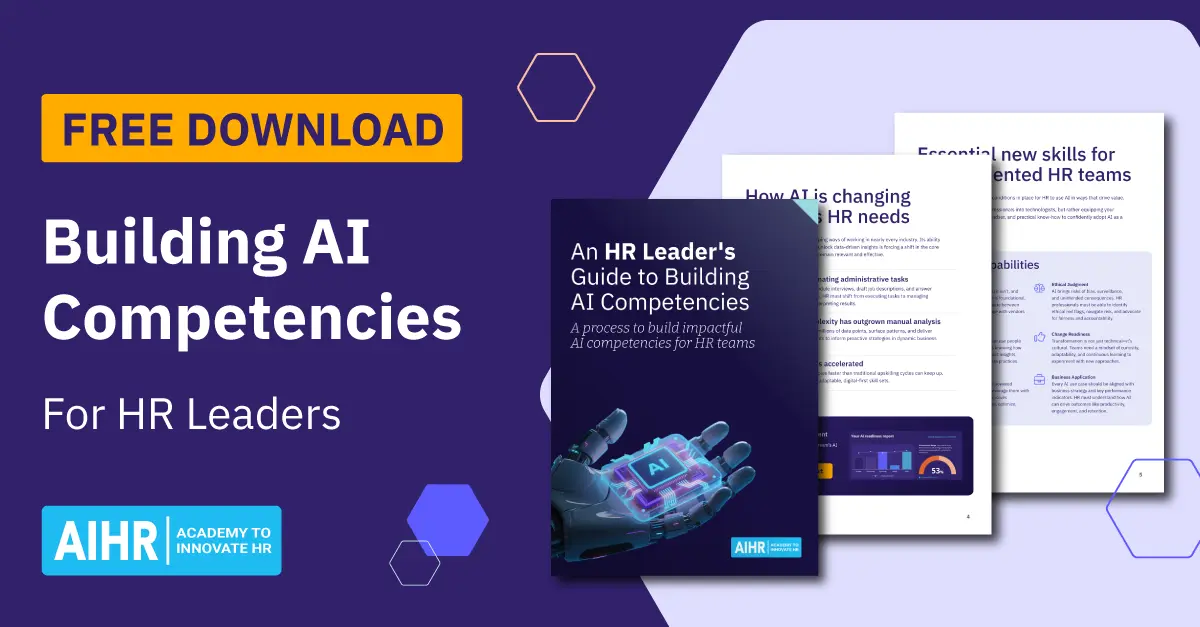HR tips for small businesses are more than just “nice to have,” they’re essential for survival and growth. Managing Human Resources for small businesses is complex because lean HR teams must juggle compliance, payroll, onboarding, and employee engagement all at once. Every decision carries weight, and without the right foundations, small missteps can quickly spiral into costly risks.
In this article, we share HR best practices for a small business that help leaders make HR more efficient, compliant, and strategic.
Contents
How to effectively manage HR in a small business
21 HR tips for small businesses
– Saving time in HR recruitment
– Boosting employee engagement and retention
– Implementing strategic HR for growth
Why upskilling multiplies the impact of these HR tips
Key takeaways
- HR basics in small businesses are rarely simple: once you reach 100–200 employees, payroll, compliance, and onboarding become complex systems that need structure and consistency.
- The biggest challenge is retaining skilled employees, yet admin overload keeps HR teams stuck in paperwork instead of focusing on culture, engagement, and growth.
- Practical fixes like payroll automation, standardized onboarding, recognition programs, and succession planning help HR save time, reduce risk, and improve the employee experience.
- Upskilling the HR team multiplies the impact of these efforts, ensuring small businesses build sustainable, strategic HR practices that support long-term growth.
How to effectively manage HR in a small business
What makes HR basics so challenging in small businesses is that they’re rarely “basic” at all. On the surface, tasks like payroll, leave tracking, or onboarding seem straightforward, but complexity multiplies once you have 100 or more employees. Suddenly, every small oversight has bigger consequences, whether it’s a payroll error that affects dozens of families, a compliance slip that attracts penalties, or inconsistent performance processes that impact culture and retention.
At this scale, HR isn’t just about keeping the admin moving; it’s about ensuring structure, consistency, and fairness across an entire workforce. The challenge is that many systems and processes were built when the company was smaller, so they don’t bend easily to the demands of a larger, more diverse team. What looks like “simple HR” is often the invisible engine that keeps the whole business running smoothly, and that’s why it feels harder than it seems.
For HR leaders in smaller businesses, the real pressure comes from the day-to-day fundamentals. The very tasks that keep the organization running smoothly often turn into the biggest stumbling blocks, creating constant friction and pulling attention away from more strategic priorities. Here are just a of those stumbling blocks in action:
- Payroll: Managing pay across a bigger, more diverse workforce increases the risk of errors, delays, and job dissatisfaction.
- Leave management: Tracking different entitlements, approvals, and absences across departments becomes time-consuming and prone to inconsistency.
- Onboarding and offboarding: Without structured processes, new hires can feel unsupported, and exits can create compliance and knowledge-transfer gaps.
- Compliance documentation: Employment contracts, policies, and record-keeping quickly become overwhelming, and any slip carries real legal and financial risk.
- Performance management: Informal check-ins no longer scale, and the absence of structured reviews creates frustration and disengagement.
- Retention of skilled employees: The biggest challenge for most growing businesses is keeping their top people, but constant admin and firefighting keep HR teams from focusing on culture, engagement, and growth strategies that drive retention.
21 HR tips for small businesses
Strong HR foundations don’t just happen on their own; they’re built through small, consistent actions that make everyday work smoother and more strategic. Here are 21 tips that focus on practical changes you can implement right away to save time, support your people, and strengthen the role of HR in your business.
Saving time in HR recruitment
1. Automate payroll to free up hours every week
Manually processing payroll is one of the most time-consuming HR tasks; even small errors can damage trust. Automation ensures accuracy, keeps you compliant with tax obligations, and frees up HR to focus on higher-value work.
What you can do:
- Select payroll software that integrates with your HRIS so salary, tax, and leave data flow automatically.
- If you’re not sure where to start, AIHR’s Digital HR 2.0 Certificate Program teaches best practices for HR tech adoption, including payroll automation and integrated HR systems.
2. Upskill your HR team with digital skills
New tools only save time if people know how to use them. When your HR team understands how to adopt and manage HR tech, you avoid resistance and wasted investment.
- What you can do: Enroll your team in AIHR’s Digital HR 2.0 Certificate Program to build confidence in adopting HR technology.
3. Give your whole HR team access to learning
Efficiency shouldn’t rest on one person’s knowledge. When everyone can identify and act on automation opportunities, the team becomes more resilient and less dependent on key individuals.
What you can do:
- Use AIHR’s team license to give your HR staff access to shared training resources and projects.
When HR teams spend less time on admin, they can focus on building culture, engagement, and growth. With AIHR’s team-wide training and tools, you’ll unlock efficiency and elevate HR’s influence across your SMB.
✅ Access to all 16 Certificate Programs + new releases
✅ Templates and playbooks to cut busywork
✅ AI Assistant for HR to streamline daily tasks
✅ Benchmark reporting & analytics to track ROI
✅ Dedicated Learning Consultant from 15 users
Empower your team with practical skills and resources that save time today and create long-term value tomorrow.
4. Centralize employee data with an HRIS
Spreadsheets may work for small teams, but once you have hundreds of employees, you need a system of record. An HRIS reduces admin errors, provides one version of the truth, and lets data be updated once and reflected everywhere.
What you can do:
- Implement an HRIS that connects payroll, leave, and performance management in one platform.
- HRIS lessons in the Digital HR 2.0 and HR Generalist Certificate Program share best practices for centralizing employee data and integrating systems.
5. Standardize onboarding for consistency and impact
First impressions matter. A structured onboarding program ensures new hires feel welcomed, informed, and ready to perform. It also prevents managers from reinventing the wheel every time.
What you can do:
- Create a step-by-step onboarding checklist, with digital forms, training modules, and scheduled check-ins built in.
- AIHR’s Resource Library offers free onboarding templates and checklists, while the HR Generalist Certificate Program includes onboarding process optimization.
While your small HR team won’t start saving hours overnight, you can build momentum fast with the right approach to upskilling. AIHR’s 90-Day Small HR Team Training Plan gives you a clear, practical path to start upskilling with impact from day one.
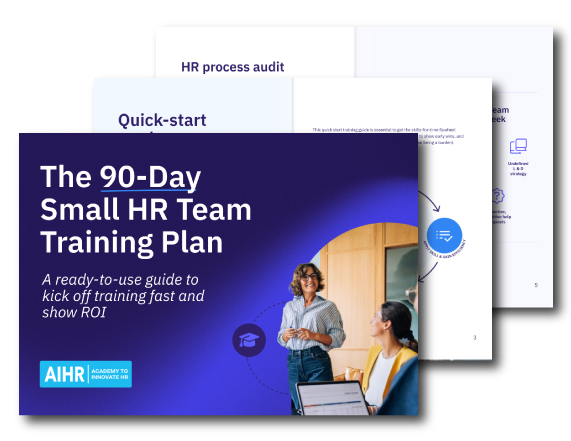
6. Simplify contracts to speed up hiring
Long delays in issuing and finalizing contracts slow down recruitment and frustrate candidates. Standardized templates and e-signatures remove bottlenecks and ensure legal compliance.
What you can do:
- Develop templates for common roles and adopt an e-signature tool so contracts can be signed in days instead of weeks.
- A great place to start is with AIHR’s Resource Library, which offers customizable contract templates; e-signature best practices are also covered in process automation courses.
7. Launch self-service portals to reduce HR queries
When employees constantly email HR for pay slips, policies, or forms, valuable time disappears. A self-service portal puts this information at their fingertips and builds trust in the process.
What you can do:
- Set up an internal HR portal where staff can access pay slips, leave balances, policies, and FAQs themselves.
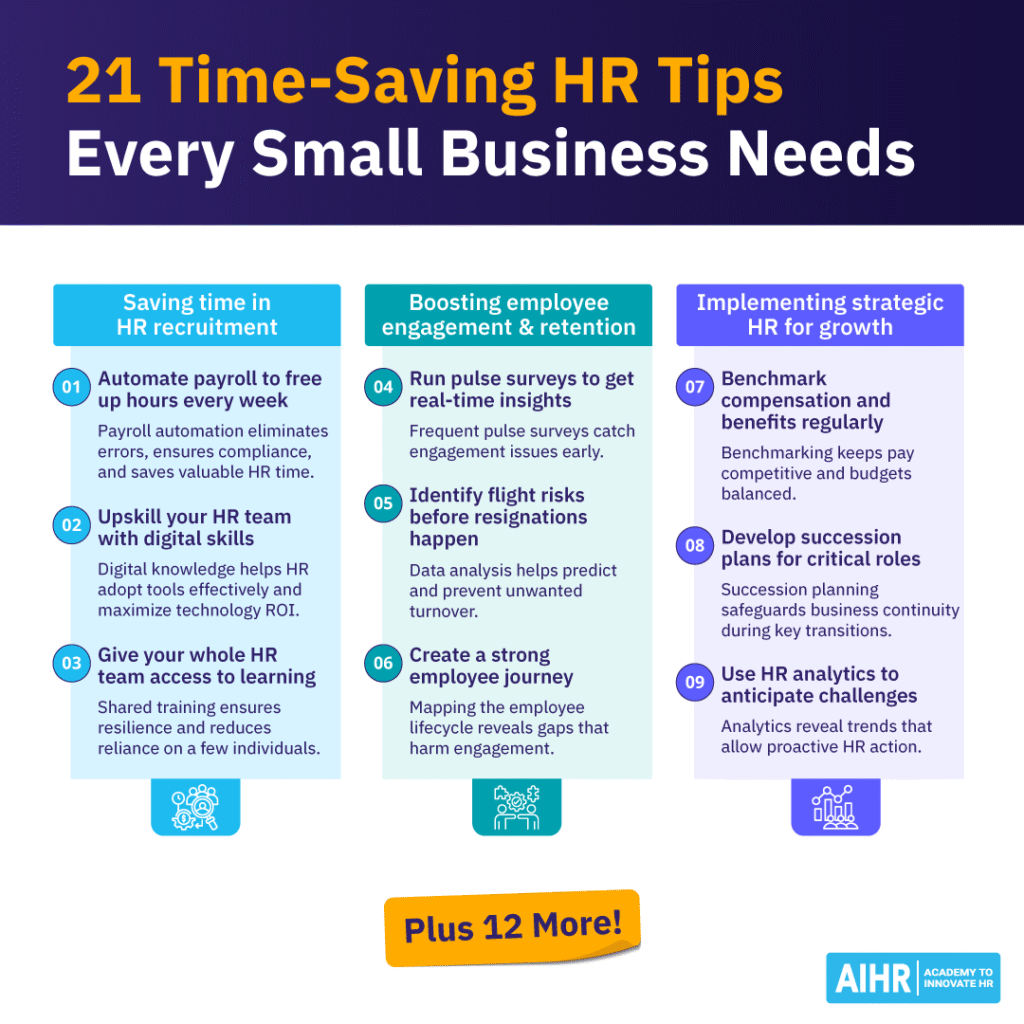
Boosting employee engagement and retention
8. Run pulse surveys to get real-time insights
Annual engagement surveys often miss the mark. Short, frequent surveys highlight issues as they arise, helping HR respond before minor problems grow into turnover risks.
What you can do:
- Roll out monthly two-question surveys and track changes over time to spot early warning signs.
- AIHR’s People Analytics Certificate Program demonstrates how analytics and survey tools can be used to measure employee engagement and run regular pulse surveys.
9. Identify flight risks before resignations happen
Retaining skilled employees is harder when HR is caught off guard. Analyzing data like absenteeism, performance dips, or survey responses lets you intervene early.
What you can do:
- Use analytics to flag at-risk employees and follow up with personalized one-on-one check-ins.
10. Create a strong employee journey
Engagement depends on how people experience every stage of employment, from onboarding to exit. Mapping this journey reveals the gaps where frustration builds.
What you can do:
- Map each touchpoint in the employee lifecycle and assign clear owners to improve the experience.
- To get your team started, AIHR’s Talent Management & Succession Planning Certificate Program includes full frameworks for employee journey mapping and engagement.
11. Implement recognition programs that feel genuine
Employees want their efforts to be seen and valued. Recognition builds morale, reinforces culture, and encourages repeat performance when it’s authentic and consistent.
What you can do:
- Introduce a peer-to-peer recognition platform or run monthly team shout-outs that spotlight specific contributions.
12. Offer flexible work options to meet diverse needs
Retention rises when employees feel trusted to manage their time. Flexibility can reduce burnout, widen your talent pool, and improve job satisfaction.
What you can do:
- Start with small pilots, such as flexible start times or one remote day per week, and then scale based on feedback.
13. Create career development pathways to build loyalty
People stay where they can see a future. Structured development paths signal to employees that growth opportunities exist inside your business, not just outside it.
What you can do:
- Link performance reviews to personal development plans, with clear milestones and training opportunities.
- The Talent Management & Succession Planning Certificate includes tools for career mapping and planning, which can be found in the AIHR’s Resource Library.
14. Celebrate small wins to reinforce culture
Engagement doesn’t come only from big bonuses or promotions. Celebrating progress and achievements (whether a successful project or a service milestone) creates a culture of appreciation.
What you can do:
- Include weekly win-sharing in team meetings and highlight achievements on internal channels.
Implementing strategic HR for growth
15. Benchmark compensation and benefits regularly
At 100 to 200 employees, you’re competing directly with larger organizations for talent. Benchmarking ensures you remain attractive without overextending budgets.
What you can do:
- Compare salaries and benefits annually against industry benchmarks and adjust packages accordingly.
- AIHR’s People Analytics and HR Metrics & Dashboarding Certificate Programs include compensation benchmarking techniques and market data analysis for teams that have not benchmarked at this level or want to improve their skills.
16. Develop succession plans for critical roles
Losing a senior leader or key specialist can disrupt the whole business, but succession planning reduces this risk and ensures continuity when changes happen.
What you can do:
- Identify mission-critical roles, choose potential successors, and provide mentoring or stretch assignments.
- The Talent Management & Succession Planning Certificate Program gives your team all the tools you need to get started, and a free succession planning template is available in the resource library.
17. Use HR analytics to anticipate challenges
Data-driven HR lets you move from reacting to predicting. Analytics reveal patterns like high turnover in a department or rising absenteeism.
What you can do:
- Build dashboards that track metrics like time-to-hire, turnover rate, and engagement scores, then act on trends.
- Enroll your team in the People Analytics Certificate to build data skills for tracking HR metrics and building dashboards to spot trends early.
18. Align HR goals directly with business strategy
When HR runs parallel to business goals, progress stalls. Aligning HR with strategy ensures talent decisions actively drive growth.
What you can do:
- Translate business objectives into HR deliverables, like linking sales targets to recruitment needs.
- The HR Business Partner 2.0 Certificate Program teaches strategic alignment of HR initiatives with business objectives.
19. Build leadership capability to strengthen culture
Managers play the most direct role in engagement and retention, and when leaders lack training, even strong HR policies fall flat.
What you can do:
- Offer leadership training focused on coaching, communication, and managing performance.
- The Talent Management & Succession Planning focuses on manager and leadership development.
20. Strengthen compliance frameworks as headcount grows
The bigger the workforce, the higher the compliance risk, but the good news is that clear documentation protects both employees and the business from costly disputes.
What you can do:
- Conduct annual policy audits, update contracts, and ensure all staff acknowledge the latest policies.
21. Invest in continuous HR learning to future-proof your team
HR teams that keep learning stay ahead of legal, technological, and workplace changes, because continuous learning ensures you can adapt as the business grows.
What you can do:
- Use AIHR’s Strategic HR programs with the purchase of a team license so the whole HR function develops together.
Why upskilling multiplies the impact of these HR tips
Knowing what needs to be done is rarely the problem for HR leaders; it’s having the time, tools, and confidence to do it consistently that makes the real difference. Upskilling makes a real difference. A small investment in building HR capability today can unlock significant returns for years to come by reducing daily admin struggles and freeing up energy for more strategic work.
AIHR’s Team License is designed with small HR teams in mind. It gives your entire function access to more than 15+ specialized certificates and 50+ mini-courses, all delivered in short, modular lessons that fit into busy schedules.
- The platform goes beyond learning: with ready-to-use templates, cheat sheets, and guides in the resource library, you never have to start from scratch.
- Courses are regularly updated to stay on top of industry changes, and new courses are added to help HR leaders adapt to new technologies.
- Over and above skills, when you need a sounding board, AIHR’s global community helps you to validate ideas, share challenges, and crowdsource solutions from peers.
Upskilling shifts HR from constantly chasing tasks to actively shaping the business by turning reclaimed time into compounding strategic value. It’s a practical way to ensure that every HR initiative’s impact stretches further, supporting both the people you manage and the growth you’re driving.
Your next steps
These 21 HR tips for small businesses give HR leaders a practical way to save time, reduce compliance risk, and hold on to valuable talent. But lasting change doesn’t come from quick fixes alone — it comes from consistent training and a shared foundation of knowledge across the whole HR team.
With AIHR’s Team License, SMBs can build that foundation. Your HR team can upskill across all critical areas, from compliance and payroll to engagement and retention, through specialized certificates and practical learning resources. It’s the most effective way to ensure these tips don’t just work today, but continue to create value as your business grows.
FAQ
Small businesses must meet the same legal and compliance obligations as larger organizations, including accurate payroll, employment contracts, health and safety requirements, and record-keeping. Beyond compliance, HR is responsible for onboarding, engagement, and retention, all of which shape the employee experience. Meeting these requirements consistently protects the business while laying the groundwork for a strong, productive workforce.
The HR basics every small business owner should understand include payroll, leave management, compliance documentation, onboarding, and performance management. These functions might look straightforward, but at scale, they require formal processes and systems to avoid errors and ensure fairness. Owners who get the basics right build trust with employees and free up HR to focus on engagement and culture.
Recruitment and retention remain the most pressing challenges, with SHRM reporting that only just over half of HR professionals find their recruiting efforts effective. Employee engagement, leadership development, and compliance also create pressure. Many small business HR teams face the additional strain of limited resources, meaning admin tasks dominate while strategic work is sidelined.
Efficiency comes from standardizing processes and using the right tools. Automating payroll, centralizing data in an HRIS, and setting up self-service portals reduce time spent on repetitive admin. Structured onboarding, recognition programs, and succession planning also create consistency and reduce risk. Efficiency isn’t just about saving time; it gives HR the space to focus on retaining talent and shaping culture.
Upskilling ensures HR teams can implement best practices consistently and adapt as the business grows. Training in areas like people analytics, digital HR, and talent management gives teams the skills to anticipate challenges, design better processes, and influence strategy. A small investment in learning compounds over time, turning reclaimed hours into long-term value for both employees and the organization.


